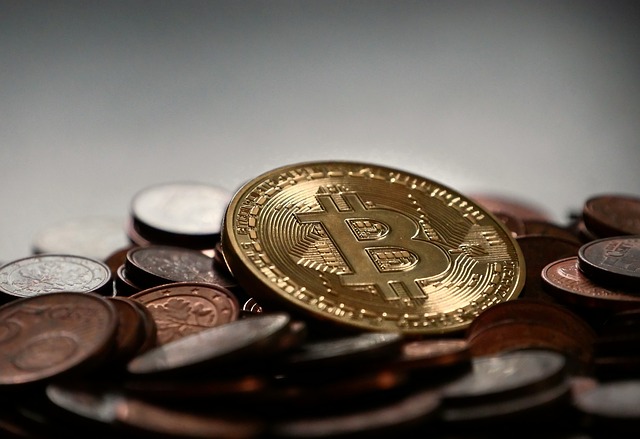Many supporters believe Ordinals can make Bitcoin more sustainable over the long term. They add that the inscription process can lead to increased demand for block space, which could increase transaction fees and help keep miner revenues high.
Yet, some critics argue that introducing Ordinal values could compromise Bitcoin’s decentralization and security. They point out that tracking serial numbers of Satoshis could be a significant risk to fungibility.
How to Create an Ordinal
Bitcoin ordinal values are a unique form of on-chain non-fungible tokens (NFTs) that create a permanent record of ownership and authenticity for digital assets stored on the Bitcoin blockchain. The protocol allows for adding arbitrary data to a Bitcoin transaction and ties it to a specific satoshi (BTC) in a process called “inscription.”
With their ability to secure and authenticate the ownership of digital assets, bitcoin ordinals have generated significant interest from investors and developers alike, surpassing 1 million inscriptions on April 8, 2023. Tools allow users to track on-chain inscriptions and explore the wide variety of digital assets available for sale as Bitcoin ordinals.
The historical significance and impact of bitcoin ordinal values are deeply rooted in reshaping traditional financial paradigms, serving as a benchmark for the worldwide valuation and adoption of cryptocurrencies.
While the technology has sparked conversation around its potential for fostering new Bitcoin innovation, it is not without its detractors. Some Bitcoin maximalists view it as a wasteful feature that distracts from the cryptocurrency’s intended use case as money.
Others see the technology as a progressive step forward for the Bitcoin ecosystem, providing a more robust way to store data on the blockchain while supporting fungibility. Regardless of how they are viewed, bitcoin ordinals are critical in expanding the Bitcoin network’s capabilities and could play an essential role in shaping future crypto evolution.
What is an Ordinal?
Ordinals are non-fungible tokens that leverage the Bitcoin blockchain network to provide unique identifiers for digital artifacts. Unlike NFTs on other blockchains, which often require separate networks to manage, Bitcoin ordinals enable this capability by natively integrating features into the cryptocurrency’s existing ecosystem.
For instance, the open-source ORD (ordinals) protocol allows users to attach various data to individual Bitcoin Satoshis. The resulting artifacts, or “ordinals,” are then traded one-to-one with each other for value. This one-to-one transferability makes them a perfect vehicle for NFTs.
To achieve this, ORD utilizes two relatively recent Bitcoin improvements. Together, these enhancements enable data such as pictures, text, or even video to be inscribed directly into the witness segment of a Bitcoin transaction.
Once inscribed, the data is permanently recorded on the blockchain. Moreover, this information can be viewed via an Ordinals-enabled wallet or online Ordinals viewer.
Despite this, not everyone is on board with this emerging feature. Some critics argue that ordinals deviate from Bitcoin’s primary “peer-to-peer electronic cash system” objective, while others warn of blockchain bloat and compromised fungibility. Nonetheless, if successful, ODs could entice a new category of users to the Bitcoin ecosystem and invigorate a development-centric culture that may spur further advancements for this pioneering cryptographic asset.
How to Inscribe an Ordinal
Ordinals represent a new type of Non-Fungible Token (NFT) that is secured on the Bitcoin blockchain. This innovation has drawn interest from the broader crypto community, driving developers to create tools to facilitate this new form of NFTs. The popularity of Bitcoin ordinals has also pushed transaction fees higher, which benefits miners.
NFTs are digital assets with a unique value, and unlike traditional tokens like currencies or commodities, they can be digitized and traded on a blockchain. NFTs are used in various ways, from virtual goods to collectibles and sports cards. Ordinals are similar to NFTs in that they can be engraved with information that makes them unique. The difference is that Bitcoin ordinals are engraved on existing satoshi units rather than created from scratch.
The inscription process is similar to how a digital card is printed. Once the inscription is complete, the ordinal is added to the blockchain and can be viewed by others. Ordinals are a great example of how the Bitcoin network can expand beyond its traditional financial uses and function as a cultural layer.
Since launching in December 2022, Bitcoin Ordinals have garnered significant attention from the broader cryptocurrency ecosystem, surpassing one million inscriptions on April 8, 2023. This success has fueled discussions about the potential of Bitcoin Ordinals to unlock new possibilities for the blockchain and spur further growth in Bitcoin adoption and usage.
How to Manage an Ordinal
A significant development for NFTs, ordinals are a new way to inscribe data directly on the Bitcoin blockchain. They are independent of Layer 2 solutions and capitalize on previous network enhancements.
Ordinals allow you to create non-fungible tokens by assigning values to each satoshi (the smallest unit of Bitcoin). By assigning a serial number to a specific satoshi, you can inscribe or attach information to create an ordinary, creating a new class of NFT. This process also enables a unique property for NFTs, a deterministic relationship between an identifier and the underlying asset.
While some have criticized ordinals, they are a promising new feature for the Bitcoin network. Ordinals help to increase the security of the Bitcoin blockchain and provide more ways to use it for digital assets.
Moreover, they are a welcome addition to the Bitcoin ecosystem because they can help solve NFT market issues related to verification, provenance, and ownership. As a result, they can make NFTs more usable and provide better protection against counterfeiting and fraud. Additionally, ordinals can be used to identify and analyze price trends in the NFT marketplace. Tools are available for monitoring on-chain inscriptions and tracking prices to identify arbitrage opportunities.
